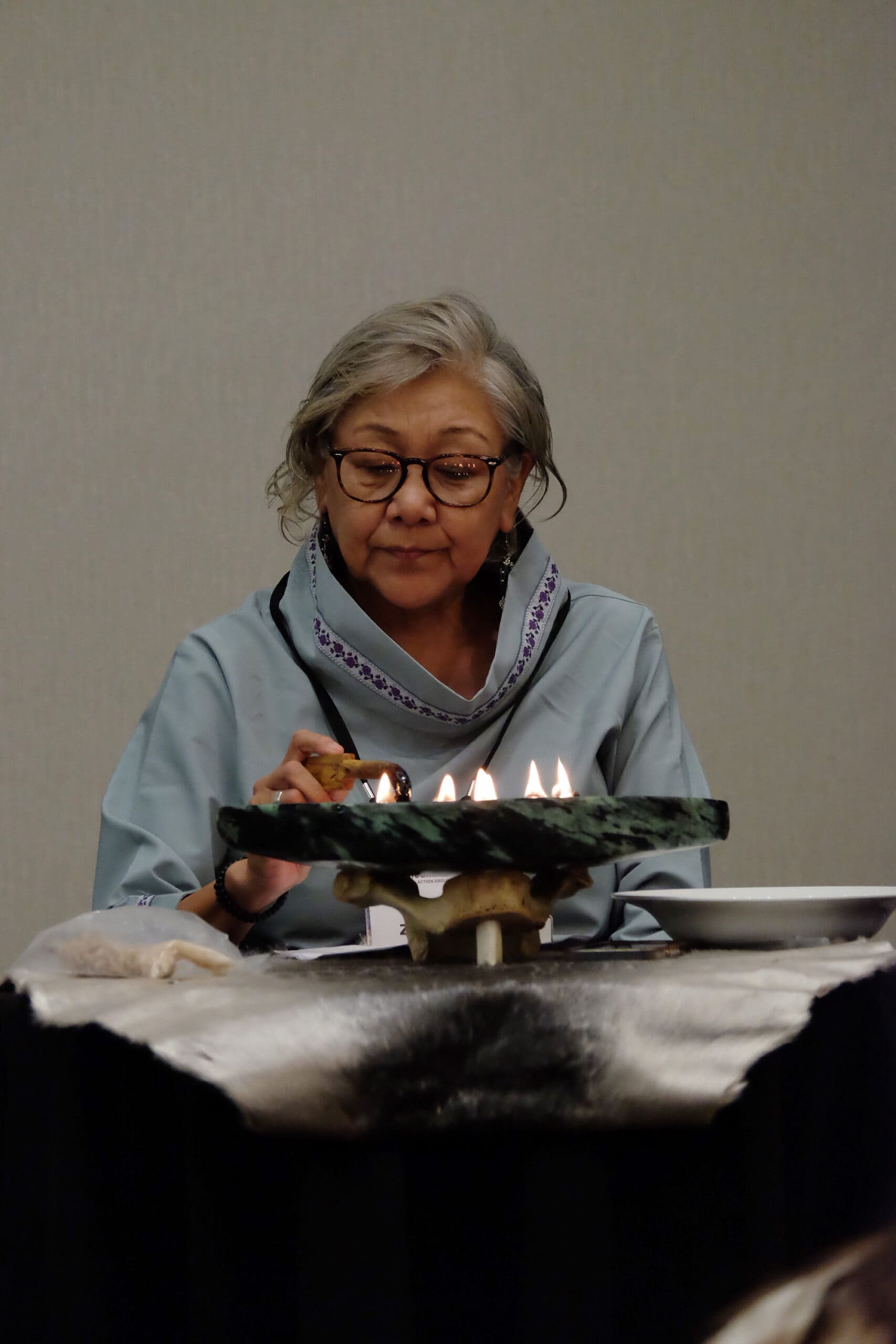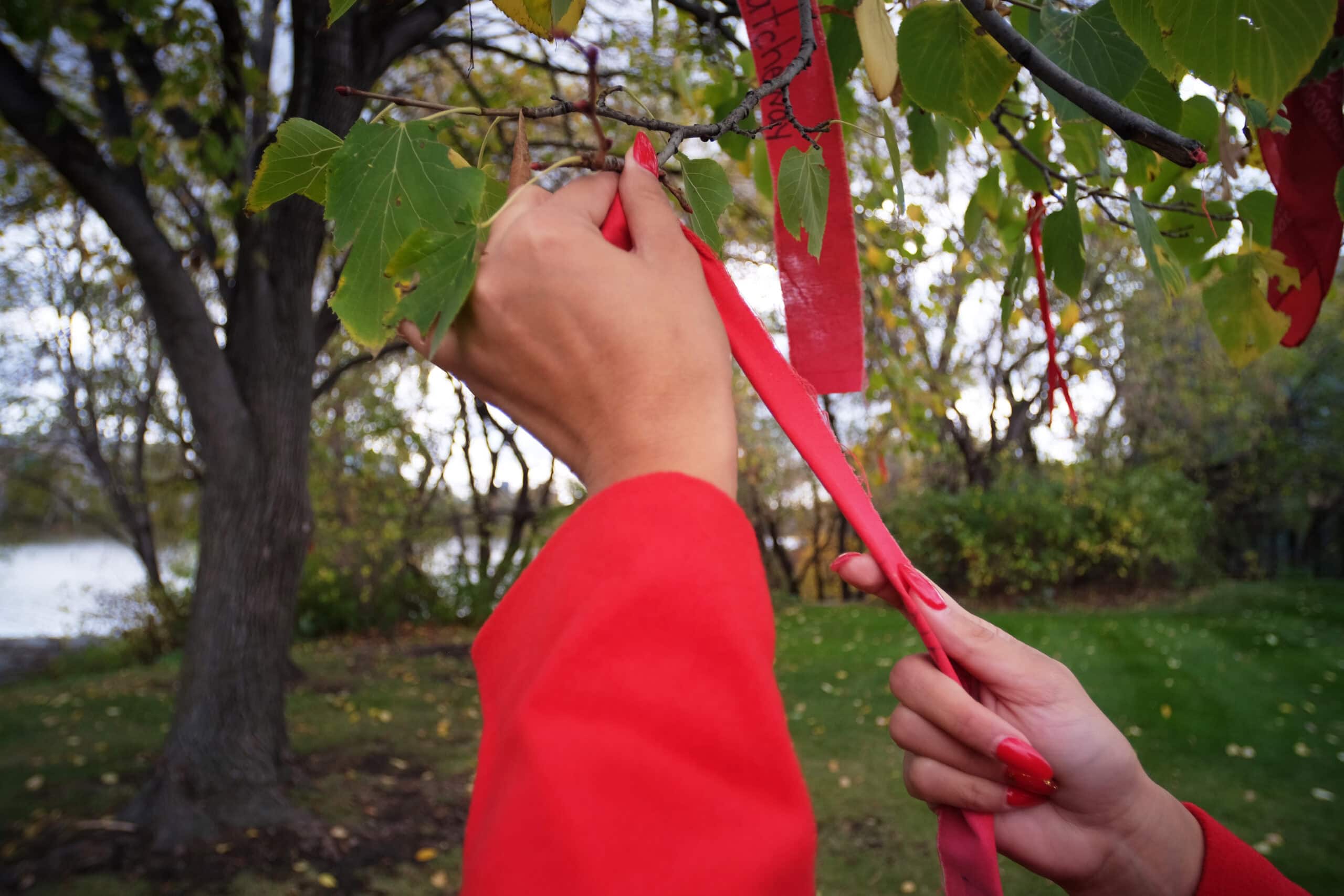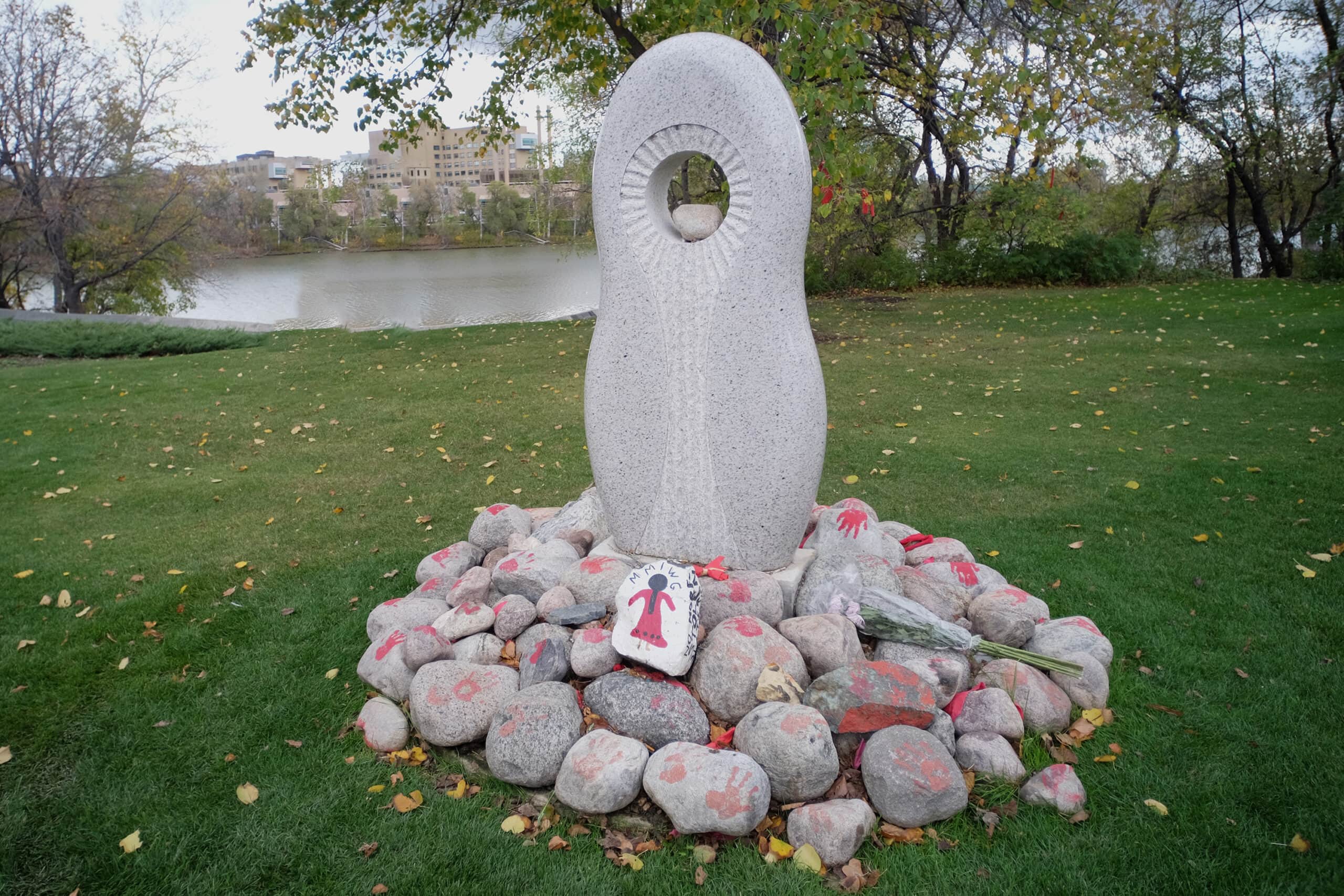Baskets of Rights
Blankets are common across cultures. They protect us, keep our babies and Elders warm, acknowledge our relationship to one another, and are a necessity of life. In the UIAG’s report, overarching inherent rights and responsibilities apply to the basket of rights, and are referred to as the “blanket” which wraps and protects the baskets.
The UIAG priorities are contained in each of the baskets with immediate priorities (in the next 2 years), medium term priorities (3-5 years) and long-term priorities (beyond 5 years). These are meant to be a guide and should not limit the ability for regions to determine what works best for them.
Right to Culture
Goal: To restore, reclaim, and revitalize **First Nation, Inuit and Métis culture and language in urban centres with equitable funding and support.
- **First Nation, Inuit and Métis languages/revitalize and restore culture and languages.
- Access to language immersion programs.
- Preserve knowledge.
- Knowledge Keepers – capture knowledge/address cultural notions – for example, requirements to participate in cultural ceremonies – when people are not doing well is when they need access to ceremony and culture. Need to recognize that some **First Nations people use substances in ceremony.
- Address attempted assimilation – reconnect, rebuild, heal.
- Permanent empowerment fund.
- Anti-Racism and Anti-Sexism Education and Training.
- It is critical that Canadians receive high quality **First Nations, Inuit and Métis specific anti-racism and anti-sexism education and training. Until we enjoy a high level of education on both these fronts, we will continue to lack intelligent dialogue about reconciliation and finding real solutions to protect *Indigenous women, girls and 2SLGBTQQIA+ people.
- Develop an anti-racism and anti-sexism National Action Plan.
- Cultural safety & service delivery.
- Access to culture regardless of residence.
- Prevention and healing. Holistic approach to family maintenance with a cultural focus.
- Expansion of cultural supports.
- Cultural to heal, engage, live
- Cultural continuity
- Culture core to programs and services
- **Inuit culture included in education in the south
- Representation in media and pop culture
- Safe cultural spaces in urban settings
- Competent and cultural approved training material on **Métis history and culture (governing bodies from each province)
- Address lack of understanding of **Métis identity
- Misrepresentation of *Indigenous women
- **Métis Elders and knowledge keepers in all programming
- **Métis history, culture and identity – early learning
- Investments in **Métis-led, community driven research
- Michif cultural revitalization programs, education and training
- “Re-inscription” – a process where you re-establish and strengthen who you are
- *Indigenous led service delivery
- Reclaim/reinstate value of women, girls and 2SLGBTQQIA+ traditional roles
Equitable approach to investing in culture and language resources that have been typically been underrepresented in areas within Canada (southern **Inuit, urban Métis and First Nation) - Promote identity through cultural healing and language opportunities
- Prevention and healing. Holistic approach to family maintenance with a cultural focus
- Expansion of cultural supports and recapture Indigenous languages
- Funded Access to **First Nations, Inuit and Métis Knowledge Keepers, teachers, and Elders.


Right to Health and Wellness
Goal: To restore, reclaim, and revitalize **First Nation, Inuit and Métis values and approaches to health promotion and community wellness in urban centres, building on traditional knowledge in caring for our spiritual, physical, mental and emotional well-being.
- Crisis response teams
- Substantive funding equality
- Community-based health and wellness, including healing for women, families, parents, children, youth, men and boys, and 2SLGBTQQIA+ people
- Wraparound services
- Healing programs/healing fund
- Mental, emotional, spiritual, physical – holistic approaches to healing
- Intergenerational healing
- Recreation/disabilities
- Access to financial resources for healing
- Translation/extra support for urban **Inuit
- Access to benefits not covered by hospital/medical care insurance
- Cultural safety in hospital
- Distinct health needs of **Métis/equal access to health and healing
- Role of **Métis Elders & Knowledge Keepers in healing
- Jordan’s principle/Children First considerations – equitable access to health, social and educational supports
- Access to traditional medicines and foods in urban centres
- Access to traditional healing in urban centres
- Access to victim services not matter the situation, i.e criminal record
- Responsibilities of Province and Territories
- Non-Insured Health Benefits (NIHB) accountability
- Reduce barriers for health supports
- Access to joy, rest and recreation (Children’s Right to Play)
- If properly funded, *Indigenous women’s organizations, with community partners would be able to quickly mature and develop appropriate levels of wrap around services for urban *Indigenous women, girls and 2SLGBTQQIA+ people.
- There needs to be a sustained focus on equitable access to health, wellness and healing services and resources including traditional foods, medicines and healing.
- Within the next 3 years provincial and territorial governments should be clearer about how they intend to address their responsibilities to urban *Indigenous women, girls and 2SLGBTQQIA+ people.
- Calls for health care providers to work in conjunction with the wellness calls for justice
- Training for health care providers
- Creating capacity
- There will need to be continuous work for the next decade to address cultural safety in hospital and other non-*Indigenous run healthcare facilities to continue uprooting *Indigenous-specific, systemic racism.
Right to Safety and Human Security
Goal: Women, girls and 2SLBGTQQIA+ people in urban centres thrive without being under a constant threat of violence or harm from people or systems that intentionally and unintentionally target them.
- Shelters, safe spaces, transition homes, 2nd stage housing
- Indigenous women’s organizations are emphasizing the significant lack of options for safe places/spaces and housing for **First Nations, Inuit and Métis women, girls and 2SLGBTQQIA+ people and are calling for immediate action on this call to action. If there is only one thing, we can do in the next 2 years this would be a priority action for some regions.
- Targeted investments to address these regional disparities should be early priorities
- Access to safe housing/with less overcrowding/mobility
- Housing a key push factor for **Inuit
- Stabilization and intervention programs
- Transit and transportation
- Along with safety in the sex industry, this call goes hand in hand with having safe places to go and to receive help and assistance and the ability to get to places of safety and services.
- Recognition of the right to human security
- Self-determination/economic & social development
- New housing/repairs
- Urban *Indigenous Housing strategy – access to safe housing/mobility/overcrowding to help end violence and sexual exploitation
- Programs and services for *Indigenous women, girls, and 2SLGBTQQIA+ people in the sex industry to promote their safety and security.
- Legislation sex workers – currently it is the women who are condemned, who get a record, and then cannot get government job, by the men who are creating the market walk free.
- Community resources for urban *Indigenous women, girls and 2SLBGTQQIA+ people, which should be built upon supporting people’s education and employment efforts. There is a lot of work to do to recover from cycles of poverty and violence due to colonization, assimilation, and genocide. Education, training, and employment is one critical and employment is one critical pathway out of these cycles and need dedicated and long-term investments.
- Child welfare- support for children and families. Distinctions-based approaches mean that some children will fall through cracks in urban settings.
- Community driven programs and services: stabilization and intervention programs (appropriately funded and community driven), educational, training, and employment opportunities. Safety planning/social norms (the curriculum can be developed and then implemented over long term. However, it is recognized that a lot of curriculum already exists. Public Safety could fund community organizations to be able to do emergency planning and safety planning)
- Communication/education/reducing stigma: reduce stigma regarding substance use/campaign (communications campaign could focus on education, resources and supports for community organizations) – ‘it is never ok to have sex with a child’ campaign/strategies to prevent, created awareness and detail intervention models to address **Métis women, girls and 2SLGBTQQIA+ people
- Address violence – perpetuated by the state, police, laws, **First Nation, Inuit and Métis governments
- Stabilization and intervention programs.
- Addressing exploitation
- A broad spectrum of services/expanded definition of violence
- Human trafficking – 9 out of 10 are trafficked from urban area to urban area
- Anti-Sexism Campaign (it is ok to be and feel pretty)
- Safety planning/social norms
- Economic independence – jobs provide an opportunity for a good life and a safe, stable environment
- Impact of colonialism/affirm rights to self-determination
- Medical alert style system for women and children in vulnerable positions
- Child welfare legislation for children living out of traditional territories, including all children who are **Inuk but not beneficiaries
- Self-determination/economic & social development – long-term, sustainable funding designed to meet the needs and objectives as defined by **First Nations, Inuit and Métis peoples and communities.
- Establish a guaranteed annual livable income for all Canadians, including **First Nations, Inuit and Métis peoples, to meet all their social and economic needs.
- Review jurisdictional collaboration for wise practices and share knowledge.
- Continue work on Campaign – ‘never ok to have sex with a child’ and ‘ending violence against *Indigenous women, girls and 2SLGBTQQIA+ people’
- Implementation and training
- Strategies to prevent, create awareness and detail intervention models to address **Métis women, girls and 2SLGBTQQIA+ people and impact of colonization/affirm rights to self-determination
- Self-Determination in urban *Indigenous programming/devolution of services from government to community-driven entities: economic & social development/educational, training, and employment opportunities.


Right to Justice
Goal: Co-developed justice reform to restore, reclaim and revitalize **First Nation, Inuit and Métis laws and culturally appropriate approaches to improve short and long-term outcomes for **First Nation, Inuit and Métis women, girls and 2SLGBTQQIA+ people, no matter where they reside.
- Support victims of crime and MMIWG and 2SLGBQQIA+’ families and friends
- Immediate need to support current victims of crime, families and the communities with a wide range of legal and health/healing services. There are major regional disparities
- These services are currently non-existent and/or poorly funded and/or non*Indigenous led. Targeted investments to address these regional disparities should be early priorities.
- Resources for families and kinship networks of victims/education programs/comprehensive strategy for children including healing-based programs, which are critically important.
- Immediate need to support current victims of crime, families and the communities with a wide range of legal and health/healing services. There are major regional disparities
- Missing persons legislation
- This should begin right away and continue into the short-term. Can also include the establishment of a national database with resources to investigate and find missing women, girls and @SLGBTQQIA+ people
- Restorative justice programs & **First Nations, Inuit and Métis peoples’ courts
- Calls for Justice 5.7, and 5.15-5.21 – need to look at these together, in depth for areas needing reform
- Seats at the table “nothing about us without us”
- Ensure that **Inuit issues are included in training for police forces
- Best practices for police response to missing person reports
- Transform **First Nations, Inuit and Métis policing. Special enforcement units/Well funded **First Nation, Inuit and Métis policing oversight bodies
- Review and amend the Criminal Code
- Gladue reports/principles
- Equitable **Métis access to Gladue reports resources to support ** Inuit communities
- Recruitment and cultural education
- Legal representation/access to legal aid
- Corrections – commitment to eliminating the overrepresentation of **First Nations, Inuit and Métis people in custody over the next decade, and that reporting mechanisms include specific reporting on all aspects of the criminal justice system, including but not limited to police services, community corrections, prisons and parole. Civilian oversight bodies.
- Overrepresentation of **Métis in custody/ensure they are properly identified as **Métis in the justice system
- Perpetrators – who is taking and killing these women? Accountability in the system and individual accountability/resources to bring perpetrators to justice. Prevention programs – education programs for young people, including school-based violence prevention and social justice education – focus on teaching respect for women, girls, and 2SLGBTQQIA+ people. Restorative Justice programs – addressing underlying causes and circumstances/healing information and supports to move away from violence (different interventions are required when the people who abuse were themselves abused or who acted in response to systematic failures)
- Safety Programs/awareness/prevention
- National database
- Ending criminalization – stop the marginalization, victimization, criminalization and institutionalization of *Indigenous people and look at criminalization from a victim’s lens. For example, stop criminalizing people for substance use and possession, which should be treated as a health emergency instead of a crime. Criminalization disproportionately impacts *Indigenous people, who are also the hardest hit by overdoses/poisoning. Stop criminalizing people who participate in the sex industry in order to survive. We should be helping people and addressing their reduced agency.
- Address the extreme distrust of police and courts
- Culturally appropriate justice practices
- Review and reform the law about sexualized violence and intimate partner violence
Medium and long-term priorities include the immediate priorities set out above, as well as the following additional priorities for the medium term:
- Devolution of Justice to community-driven solutions and restoring local decision-making and community authority.
- Exploring concepts of justice and supporting **First Nations, Inuit and Métis women and 2SLGBTQQIA+ communities to explore alternative approaches
- Establishment of a **Métis Justice Centre within each **Métis governing body
- Ensure that **Inuit issues are included in training for police forces
- Criminal Law reform: Gladue reports need to articulate the issue of the lack if implementation of Gladue reports and the limitations of the reports (i.e only at sentencing)
- Continue addressing deep rooted mistrust of police and the court systems across Canada.